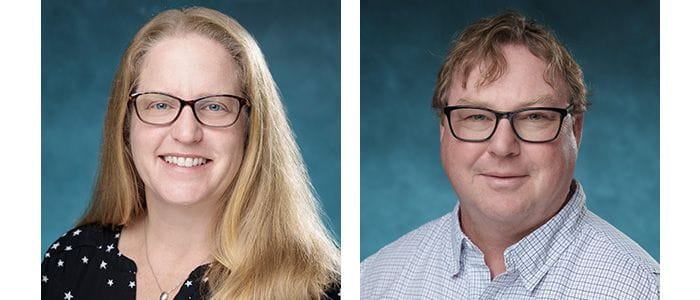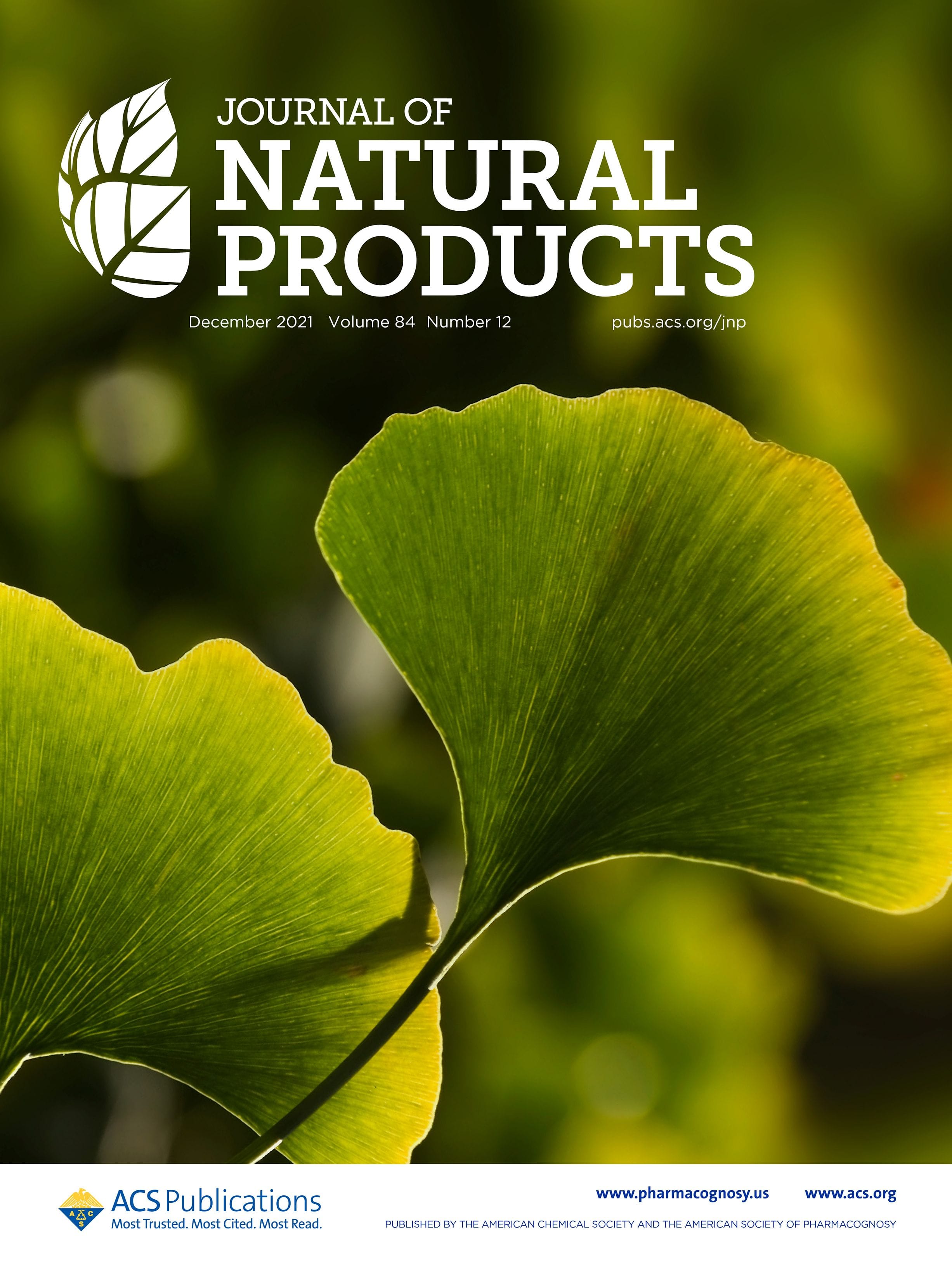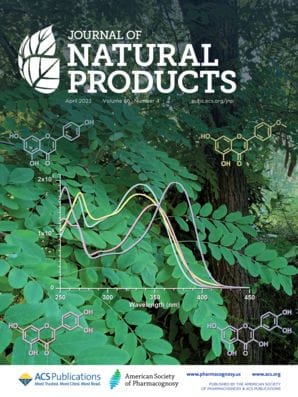Read exclusive interviews with the 2025 winners—Wendy Strangman, Thomas Williamson, and Raphael Reher—and learn about their winning papers in the Journal of Natural Products.

The Journal of Natural Products, in partnership with the American Society of Pharmacognosy (ASP), is honored to announce the 2025 winners of the Arthur E. Schwarting and Jack L. Beal Awards:
2025 Arthur E. Schwarting Award
- Prof. Wendy K. Strangman
- Prof. R. Thomas Williamson
2025 Jack L. Beal Award
- Prof. Raphael Reher
This initiative was launched in 2001 by the Foundation Board of ASP to honor two distinguished former editors of the journal and recognize some of the best works published in the Journal of Natural Products.
Read interviews with the 2025 awardees below and explore their winning research.
Jump to Section:
2025 Arthur E. Schwarting Award Winners
2025 Jack L. Beal Award Winner
Meet Profs. Wendy K. Strangman and R. Thomas Williamson, Winners of the 2025 Arthur E. Schwarting Award

Read the winning paper:
Advanced Structure Analysis Reveals a Transient Portimine B Hydrate
Jared S. Wood, Junchen Tang, Wendy K. Strangman*, and R. Thomas Williamson*
Journal of Natural Products 2024, 87, 8, 2120-2125
DOI: 10.1021/acs.jnatprod.4c00525
Read the interview with Profs. Strangman and Williamson:
Can you give a short overview of the research you are currently undertaking?
As co-leaders of UNCW’s Drug Discovery group, our labs have a primary focus on new bioactive natural products from marine and terrestrial environments. Within this, we have interests in development and application of advanced NMR-based methods and computational modeling for the solution of challenging structure elucidation problems. We also have an emphasis on development of LCMS and metabolomics-based assays for identification of compounds in complex mixtures.
How was the process of collaborating with your co-authors on this award-winning paper?
Collaborative science, and corresponding manuscript development is always exciting and rewarding. The two of us often collaborate on a variety of natural products chemistry challenges and this project provided the perfect opportunity to bring that synergy together. This project also gave us an opportunity to include Jared Wood, who recently graduated as UNCW’s first PhD in pharmaceutical chemistry, as the first author on this paper. A critical piece of the manuscript also came from the generous collaboration of professor Phil Baran and his former student, Junchen Tang, who is a coauthor on the paper. Providing their synthetic material was extremely helpful for confirming our hypotheses regarding the transient structure changes occurring between the acidic HPLC and LCMS conditions and the environment of the NMR tube which ultimately enabled inconsistencies between the various data sets to be reconciled.
Why did you choose to publish with the Journal of Natural Products, and why do you like publishing with the journal?
In this case, portimine B provided a unique structural challenge that was targeted to the readership of the Journal of Natural Products from the very outset. The captivating story and application of the latest in NMR technology required to solve this problem came together as a tour de force of techniques for natural products problem solving. We are extremely honored that this work was recognized by the editors at JNP and the ASP for this award.
Meet Prof. Raphael Reher, Winner of the 2025 Jack L. Beal Award

Read the winning paper:
A MassQL-Integrated Molecular Networking Approach for the Discovery and Substructure Annotation of Bioactive Cyclic Peptides
Tim Berger, Judith Alenfelder, Sophie Steinmüller, Dominik Heimann, Namrata Gohain, Daniel Petras, Mingxun Wang, Robert Berger, Evi Kostenis, and Raphael Reher*
Journal of Natural Products 2024, 87, 4, 692-704
DOI: 10.1021/acs.jnatprod.3c00750
Read the interview with Prof. Reher:
Can you give a short overview of the research you are currently undertaking?
At the Reher Research Group (NaProDis Lab), we focus on translational natural products research, particularly on the discovery, isolation, and structural characterization of bioactive specialized metabolites. Broadly speaking, we aim to better understand the roles these metabolites play within the complex interaction networks of organisms across different kingdoms of life, while also exploring their potential as drug leads or pharmacological tools.
To achieve this, we develop and apply both targeted approaches, such as affinity-selection mass spectrometry and selective chemical probes with UV/MS tags, and untargeted metabolomics workflows using advanced computational MS and NMR tools. These methods enable the prioritization and dereplication of compounds from complex natural extracts, including but not limited to those derived from endosymbiotic marine fungi. Our award-winning paper highlights the application of a new computational tool for building block-level annotation of peptides within molecular networks, which guided the isolation, structural elucidation, and bioactivity characterization of two new cyclic peptides.
How was the process of collaborating with your co-authors on this
award-winning paper?
This international collaboration was largely driven by my first PhD student, Tim Berger, whose dedication and hard work make me very proud. The diverse and complementary expertise of all co-authors greatly expanded the scope of this project. I believe this paper is a strong example of how collaborative, interdisciplinary research can result in more impactful and compelling scientific stories.
The project brought together colleagues from every stage of my academic journey. Dr. Dominik Heimann, a friend from my undergraduate days, synthesized the four furylalanine standards that were crucial for determining the absolute structure. From my PhD time, Prof. Dr. Kostenis and her PhD students, Judith Alenfelder and Sophie Steinmüller, demonstrated the inhibitory effect of one of the new peptides on V1A receptor-mediated signaling. During my postdoctoral period, I had many scientific interactions with Prof. Dr. Mingxun Wang and Prof. Dr. Daniel Petras, who provided access to repository-scale MassQL analysis and high-end mass spectrometry infrastructure, forming the foundation for our substructural annotation of the peptide family. Finally, during my independent career in Marburg, I began collaborating with Prof. Robert Berger and his PhD student Namrata Gohain, who supported the determination of the peptides’ absolute configurations through quantum chemical calculations.
Why did you choose to publish with the Journal of Natural Products, and
why do you like publishing with the journal?
The Journal of Natural Products has long been one of my favorite scientific journals due to its broad scope, which highlights innovative and holistic perspectives on natural products research. Additionally, its strong reputation within the natural products community, especially for its careful, constructive peer review process, makes it an excellent platform for our work. I particularly appreciate the thoughtful and personal feedback provided by the Associate Editors and the Editor-in-Chief, which consistently helps to improve our manuscripts.
Stay Connected with the Journal of Natural Products
Browse the most recent issue and sign up for free e-Alerts to stay informed of the latest content and updates from the Journal of Natural Products.

